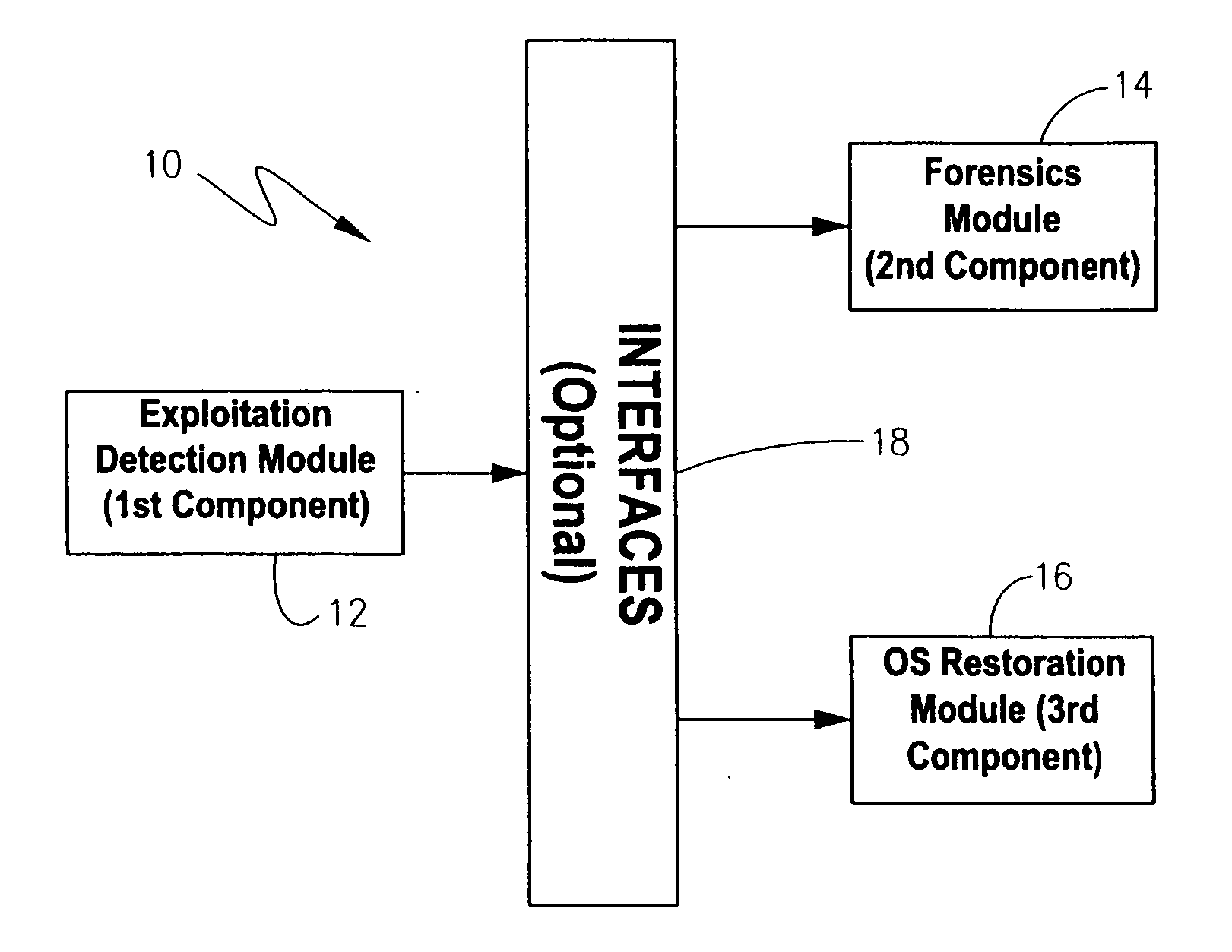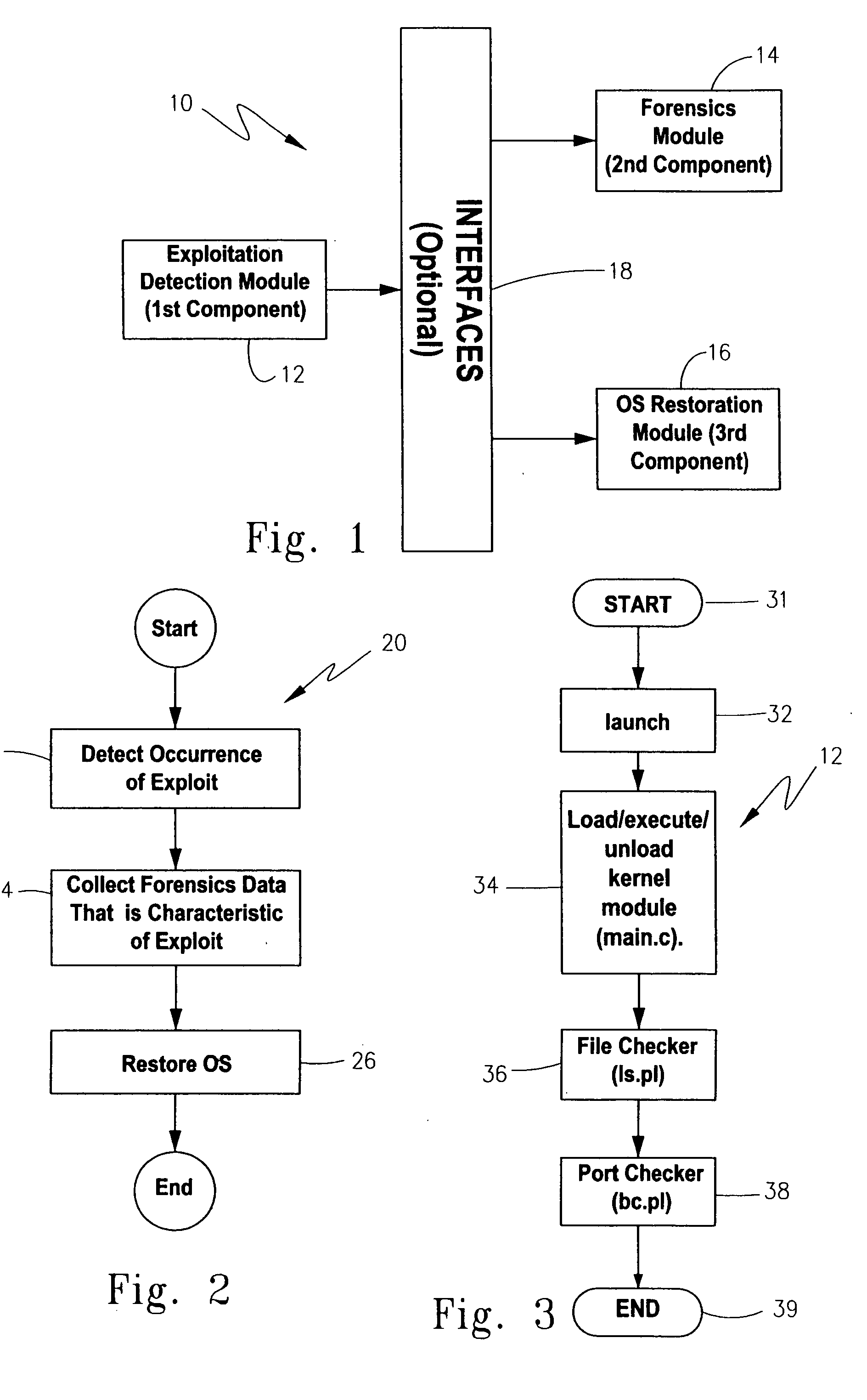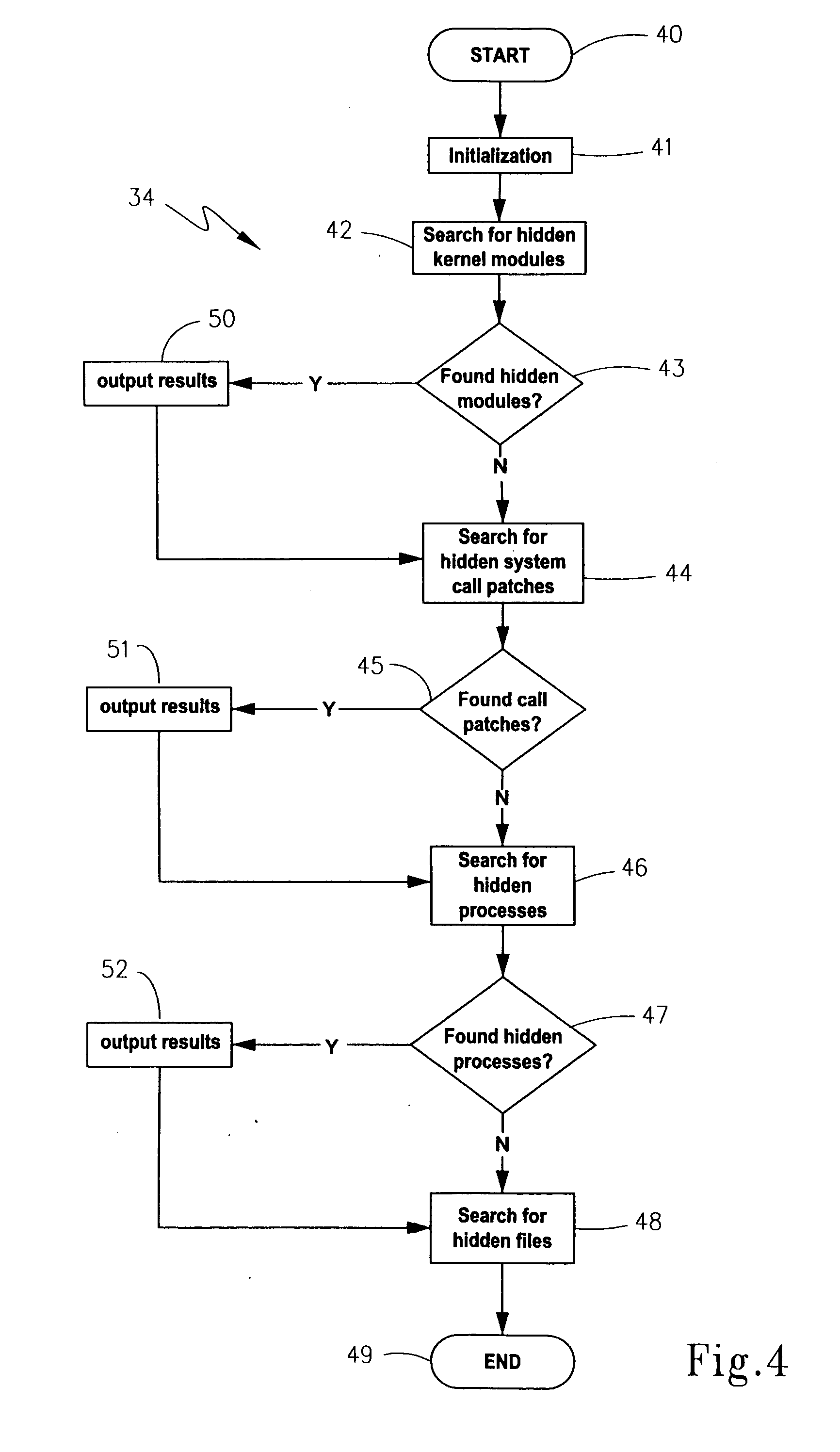Methodology, system, and computer readable medium for detecting operating system exploitations
a detection method and operating system technology, applied in the field of intrusion detection, can solve the problems of manual analysis and detection difficult and time-consuming, os occurrence and complexity, and the inability of most reasonable functioning detection methods to discover surreptitious exploits
- Summary
- Abstract
- Description
- Claims
- Application Information
AI Technical Summary
Benefits of technology
Problems solved by technology
Method used
Image
Examples
Embodiment Construction
I. Introduction
[0039] This invention preferably provides a software component, referred to herein as an exploitation detection component or module, which may be used as part of a detection system, a computer-readable medium, or a computerized methodology. This component was first introduced as part of a suite of components for handling operating system exploitations in our commonly owned, parent application Ser. No. ______ filed on Feb. 26, 2004, and entitled “Methodology, System, Computer Readable Medium, And Product Providing A Security Software Suite For Handling Operating System Exploitations”, which is incorporated by reference.
[0040] The exploitation detection component operates based on immunology principles to conduct the discovery of compromises such as rootkit installations. As discussed in the Background section, selecting either positive or negative detection entails a choice between the limitation of requiring a baseline prior to compromise, or being unable to discover...
PUM
 Login to View More
Login to View More Abstract
Description
Claims
Application Information
 Login to View More
Login to View More - R&D
- Intellectual Property
- Life Sciences
- Materials
- Tech Scout
- Unparalleled Data Quality
- Higher Quality Content
- 60% Fewer Hallucinations
Browse by: Latest US Patents, China's latest patents, Technical Efficacy Thesaurus, Application Domain, Technology Topic, Popular Technical Reports.
© 2025 PatSnap. All rights reserved.Legal|Privacy policy|Modern Slavery Act Transparency Statement|Sitemap|About US| Contact US: help@patsnap.com



